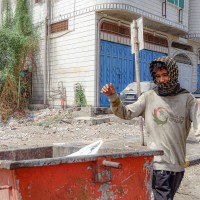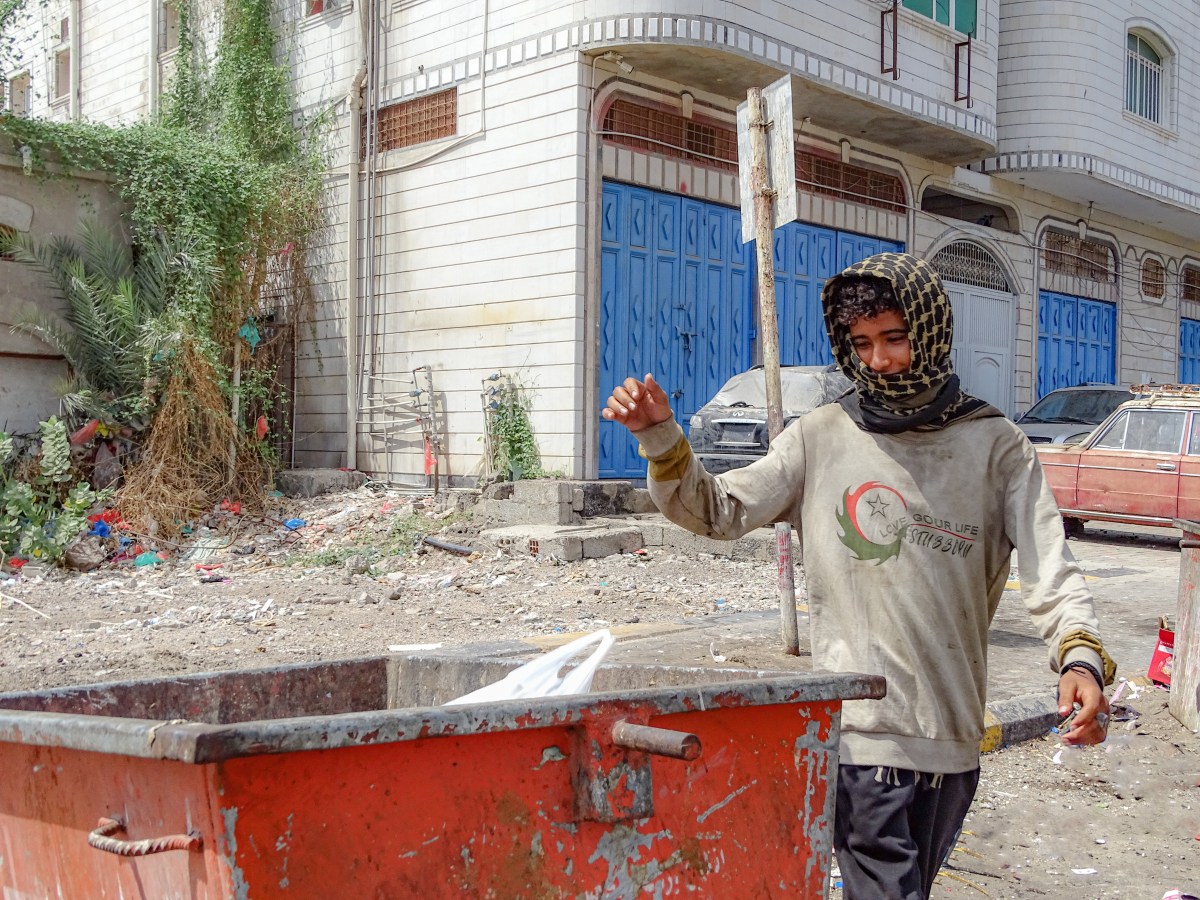When we think of the effects of war, we often picture scared people fleeing for their lives with what they can carry, destroyed roads and bridges, collapsed buildings, and heaps of rubble. We probably don’t picture trash containers, yet waste management systems are a casualty of conflict, producing additional cycles of violence.
Yemen’s waste management systems were underdeveloped before the war started, but prolonged conflict further crippled them. Air strikes destroyed waste processing centers, including a medical waste processing center with an incinerator in 2015. Since then, hazardous (toxic, radioactive, or infectious) healthcare waste is dumped in a landfill, where pathogens and toxic pollutants leak into the soil and pollute the groundwater. Vehicles to pick up waste and containers to hold waste were also destroyed in airstrikes. Skyrocketing fuel prices and vehicle upkeep costs reduced recycling efforts. Neighborhood waste pickups became more and more infrequent. At the same time, southern Yemen received an influx of internally displaced persons (IDPs) fleeing intense fighting in the north.
In communities where there were infrequent trash collections or a lack of waste containers, people used to drop their trash in informal dumps. Yemen’s excessive heat caused the garbage to smell and diseases to spread. Children started getting sick. In some places, vulnerable people ripped trash bags open or rifled through cans looking for items to resell or food to eat. Animals would rummage through the open bags, further spreading garbage. In poorer communities, trash piled up so high, it blocked access to people’s homes.
In Yemen, we’ve been building community resilience by changing relationships between returnees, IDPs, and the host community since 2010. We train insider mediators, local leaders who have authority in their communities, on how to resolve community problems before they become violent. Using our community dialogue approach, which fosters a lasting ability for communities to self-improve instead of building a dependency on outside facilitation and support, insider mediators discovered that people in the neighborhood thought others were dumping garbage deliberately, which made tensions rise.
Representatives of each side in conflict met and made a list of the key needs causing conflict in their community and prioritized them. They identified garbage as a main cause of tension. The insider mediators performed a conflict scan, in which they examine how a problem starts, how big the problem is, what is happening at the moment, and how the situation can be improved in the future. They realized that their neighborhoods were hosting more people than before while the government was collecting trash less often or not all. Garbage containers had been stolen, used to block roads, or destroyed, causing more trash to pile up on the streets. The waste was making children ill, and kids were picking up the bad habit of dumping trash anywhere. Resolving the trash problem was the common ground to which all sides agreed.
Working on a foundation of trust earned through collaboration, the insider mediators decided on a three- step approach, which we supported. Working with the local authorities, the insider mediators organized a cleaning campaign where garbage collection was reframed as “our problem,” not “my problem,” in that all the trash lying wherever in the community was “our problem.” In this way, people started to care about trash anywhere, not just in front of their own houses. Thanks to our donors’ generosity, we funded new containers, placed them in strategic areas, and the local authorities agreed to collect the trash from them on a schedule. Finally, we launched an awareness campaign to educate kids to put trash into the containers instead of throwing it on the ground.
The trash containers are brightly-colored, which is deliberate. Because they are vibrant and look nice, they create a sense of ownership in the community. People want to take care of them. Having the local authorities agree to empty the containers on a schedule has built trust between the community and the local government. People used to blame the authorities for not picking up the trash while the authorities argued they didn’t have the resources to collect it. Most significant is the change in people’s behavior about trash. Locals recognize that garbage is a collective problem which needs collaboration to solve. By working together, they strengthened the ties that bind them together as a community. Now, everyone enjoys cleaner streets and improved health. Having peace is a bonus.


